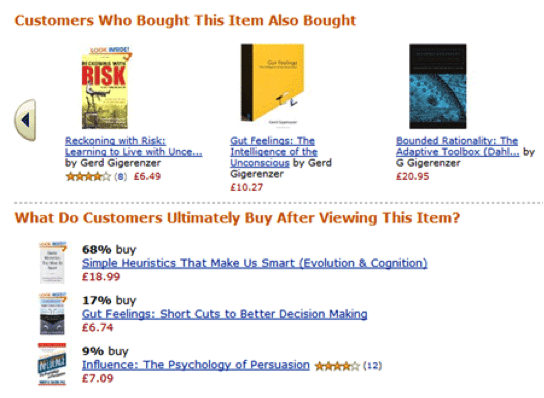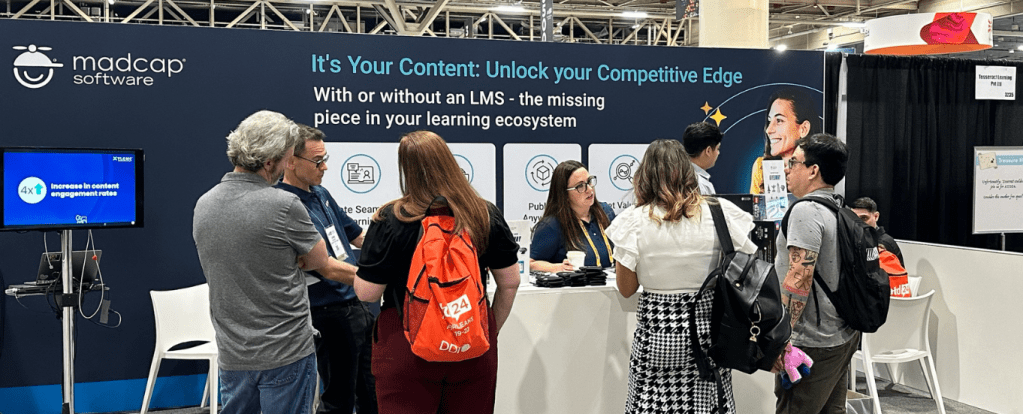
If you ask a learner how they want to learn, taking a high-gloss eLearning course is rarely mentioned. Instead, what we all consistently hear is that people want personalized learning – a term easy to throw out there but not so easy to define.
Richard Calutta, from the US Department of Education at the Office of Educational Technology, has a simple formula for what it means to personalize learning:
Adjusting the pace + Adjusting the learning approach + Leveraging student interests/experiences = Personalized learning
Richard argues that if you don’t have these three elements, then your learning isnt personalized. Fair enough, but how do you get these elements? The answer is through profiles and context – and its actually nothing new. Social networks and apps we use every day leverage user profiles and contextual information to deliver personalized learning experiences.
Amazon profiles leverage customer interests and experiences
At this point, we are used to and even expect personalization in our lives. If you’ve ever shopped at Amazon, you will immediately recognize this screen shot:

Every time you visit their site, Amazon collects information about you, building a comprehensive profile that allows them to recommend products to you based on items that youve bought in the past, items you browsed, and based on what others who have browsed the same items ultimately purchased.
And of course, who doesnt hit the content goldmine of reviews prior to making a purchase? Here, Amazon helps potential buyers by allowing users to rate a review as helpful or unhelpful. It then aggregates these votes, scores them, and presents a list of the most helpful comments, providing an instant filter for the most relevant of what are often several hundred reviews.
The application to personalized learning is unmistakable:
- How satisfying would it be if the training materials offered to an individual learner were based on the types of materials and content they have found most valuable in the past?
- How helpful would it be if learners could see what training assets people in a role similar to them are using to reach the same or related objective?
- How much more quickly could learners perform if they could instantly zero in on the most helpful content based on peer reviews and ratings?
LinkedIn profiles provide the information needed to adjust the learning approach
In business world, LinkedIn does similar things to Amazon they use sophisticated algorithms to monitor your activity and profile to:
- Connect you to people who are in similar industries & job roles and have similar educational backgrounds;
- Recommend groups that align with your industry and expertise;
- Deliver news targeted directly to your areas of interest.

When you correlate this profile data with activity tracking, the behavioral information you need to adjust learning approaches becomes readily available.
Lets take a look. When someone uses LinkedIn to get information (i.e. learn), there are a number of paths they can take. They can:
- Join or start a discussion in a group and collaborate with members
- Tap their network to find experts who can help them
- Search or subscribe to relevant news feeds and thought leaders
These are all very different approaches to learning and they will vary by user. It takes very little history to establish preferences and putting technology in place to capture this information will help corporate training organizations better and more accurately serve their learners.
Yelp! provides the context to meet the required pace information retrieval
Whats most striking about personalization is that location and context are very important, and no application leverages these two attributes better than Yelp!

Yelp! is not only great about giving you information about places near where you are, but also making sure that the content is relevant and fresh at the moment you need it. It will tell you if a place is open at the time you are searching for it, it will let you know if it is within walking distance, and it often displays messages corresponding to your search terms (e.g. Vegetarians love this place!).
Like Amazon, the application to personalized learning is unmistakable, this time in terms of performance support.
When someone is performing a task, they require only the information that is relevant to the specific circumstance they find themselves in. If Im an airplane mechanic trying to fix a sudden system problem on a plane that is scheduled to depart in a few hours, it is imperative that the procedure delivered to me is for the specific issue at hand, the specific plane I am working on and the exact airport where I am located. Without context, this is impossible.
Its clear that we experience personalization in many of our day-to-day activities, yet its something that the Learning & Development industry continues to struggle with. Why? Because as an industry, we are still in the rut of creating monolithic eLearning, putting it into an LMS, and delivering a one-size-fits-all course to everyone, sometimes dismissing personalized learning.
Academia is moving quickly to break this model and corporate training would be wise to quickly follow suit.




